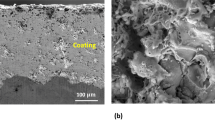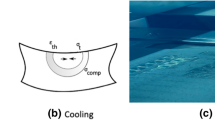Abstract
Due to its high strength-to-weight ratio, composite materials have been widely applied in aerospace manufacturing. However, some challenges are facing in fabrication and assembly of the parts with composite materials. One of them is how to collect the dwarf and dust generated from the drilling operation, especially in an open environment when the composite parts are assembled, since a large number of holes need generating to rivet the parts together when the parts with composite materials are assembled in an aircraft structure. The efficiency of dust extraction is crucial to the healthy operating environment and the quality of the assembled component. In this paper, three conceptual designs of automatic dust extraction are proposed and compared, and the best design with the hood fastened on the drilling spindle has been selected and analyzed. Its design parameters have been identified; a systematic procedure has been proposed for the design optimization; the process of the dust extraction has been modeled and simulated using the COSMOSFloWorks. Taguchi method is applied to optimize the design. The process of the dust extraction has been validated through animation.
Similar content being viewed by others
References
Ansys Inc. (2009) Powerful computational fluid dynamics software for optimization of product development and processes. http://www.ansys.com/assets/brochures/fluent-brochure-12.0.pdf
Atkinson J, Hartmann JL, Jones S, Gleeson P (2007) Robotic drilling for 737 Aileron. SAE International, 2007-01-3821
Balout B, Songmene V, Masounave J (2007) An experimental study of dust generation during dry drilling of pre-cooled and pre-heated work piece materials. J Manuf Process 2007(9):23–34
Bi ZM, Hinds B, Jin Y, Gilson R, McToal P (2009) The studies of composite drilling—the state of the art. In: Davim JP (ed) Drilling of composite materials. Nova Science, New York, ISBN 978-1-60741-163-5
Bi ZM, Hinds B, Jin Y, Gilson R, McToal P (2009b) Progress on studies of composite drilling for PKA3 project. 12th CIRP conf on modelling of machining operations, May 7–8, 2009, Donostia-San Sevastian, Spain, pp 787–794
Comsol (2007) Comsol multi-physics user’s guide, version 3.4. Comsol, Stockholm
Cook MJ (1998) An evaluation of computational fluid dynamics for modelling buoyancy-driven displacement ventilation. Ph.D. thesis, De Montfort University, Leicester, UK
Devlieg R, Feikert E (2008) One-up assembly with robots. SAE International, paper no. 2008-01-2297
Dustcontrol (2009) Capture dust at source. http://www.dustcontrol.ca/pdf/DustExtractors_construction_907383_webb.pdf
Gaitonde VN, Karnik SR, Achyutha BT, Siddeswarappa B (2008) Taguchi optimization in drilling of AISI 316L stainless steel to minimize burr size using multi-performance objective based on membership function. J Mater Process Technol 202:374–379
Gradus L, Popov Y (1984) Methods of decontaminating emissions during machining of materials. Khim Neft Mashinostr 2:10–11
Gunter L (2007) Dust Busters—how trusting employees and applying environmental innovation resulted in a better workplace. www.boeing.com/news/frontiers/archive/2007/july/ts_sf12.pdf
HSC (1998) Advisory committee on toxic substances working group (WATCH), paper WATCH/28/98. Health and Safety Executive, London (available from WATCH Secretariat, Health and safety executive, rose court, 2, Southwark Bridge, London SE1 9HS, UK)
Ideko (2006) Swarf and/or dust removal system for milling with automatic clamping. Patent no. P200600916. http://www.ideko.es/files/galeria/memoria%202006-ingles.pdf
Khettabi R, Songmene V, Masounave J (2007) The effect of tool geometry and cutting parameters on dust emission during dry machining. J Mater Process Technol 194(1–3):100–109
Kopyt P, Gwarek W (2004) A comparison of commercial CFD software capable of coupling to external electromagnetic software for modeling of microwave heating process. The industrial microwave modeling group 6th seminar “Computer Modeling & Microwave Power Engineering”, Monday, January 12, 2004, Austin, TX, USA. http://www.wpi.edu/Academics/Depts/Math/CIMS/IMMG/Seminar6-files/KopytDOC.pdf
Metris (2008) Aerospace standard automation. Aerospace manufacturing, pp 31–33. http://www.aero-mag.com/issues/february08/PDF/AM_feb08_Spotlight.pdf
SolidWorks (2008) CosmosFloWorks tutorial. www.cosmosm.com
SolidWorks Corporation (2005) Putting the spin in CFD, white paper. http://www.solid-system.com/pdf/products/cosmos/cosmos-white-paper/cosmos-white-paper10.pdf
Sutherland JW, Kulur VN, King NC (2000) An experimental investigation of air quality in wet and dry turning. Ann CIRP 2000(49):61–64
Thompson P, Oberoi H, Draper A (2008) Development of a multi spindle flexible drilling system for circumferential splice drilling applications on the 777 airplane. SAE International, paper no. 2008-01-2298
Thorne PS, Bartlett KH, Phipps J, Kulhankova K (2003) Evaluation of five extraction protocols for quantification of endotoxin in metalworking fluid aerosol. Ann Occup Hyg 47(1):31–36
Vijayaraghavan A (2006). Drilling of fiber-reinforced plastics—tool modeling and defect prediction. www.cs.berkeley.edu/∼sequin/CS285/PAPERS/Athulan-Masters.pdf
Wilkins DJ, Ashizawa, Moto, DeVault, Jon B, Gill, Dee R, Karbhari Vistasp, McDermott, Joseph S (1994) Advanced manufacturing technology for polymer composite structures in Japan. http://www.wtec.org/loyola/polymers/
Woodruff N (2007) The sky is the limit. Control and automation, August/September 2007, pp 20–23. http://ieeexplore.ieee.org/stamp/stamp.jsp?arnumber=04540119
Zaghbani I, Songmene V, Khettabi R (2009) Fine and ultrafine particle characterization and modeling in high-speed milling of 6061-T6 aluminum alloy. J Mater Eng Perform 38(N0.1):38–48
Zhang Z, Wang X, Lin L, Xing S, Wu Y, Li Y, Wu L, Gang B (2001) The effect of carbon fibre and carbon fibre composite dusts on bronchoalveolar lavage component of rats. J Occup Health 43:75–79
Author information
Authors and Affiliations
Corresponding author
Rights and permissions
About this article
Cite this article
Bi, Z. Design and simulation of dust extraction for composite drilling. Int J Adv Manuf Technol 54, 629–638 (2011). https://doi.org/10.1007/s00170-010-2971-1
Received:
Accepted:
Published:
Issue Date:
DOI: https://doi.org/10.1007/s00170-010-2971-1




